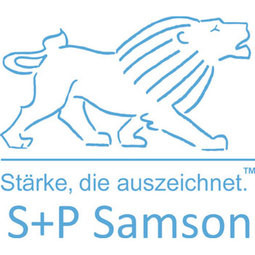
Technology Category
- Functional Applications - Remote Monitoring & Control Systems
- Wearables - Tags & Patches
Applicable Functions
- Process Manufacturing
Use Cases
- In-process Traceability
The Customer
Kennametal
About The Customer
Kennametal – an industrial technology leader for over 75 years, helps customers who expect top performance in demanding environments to achieve productivity gains. The company offers innovative, wear-resistant products, application technology and services
The Challenge
Kennametal's high quality drill bits along with their associated aluminium trays where they are arranged go through a thorough cleaning process involving ultrasound, damp and vacuum cleaning processes after machining is performed.
Before entering this washing facility, the order documents and the tray are separated and then re-allocated after cleaning. A work step that involves a risk as analyses have shown that, on occasion, trays and order documents were allocated incorrectly after cleaning. Drills went through coating processes that were supposed to be used for a different order. Hence, there was a need to eliminate mix-ups altogether.
The Solution
The solution came in the form of Structobond®, plastic labels that are permanently enclosed in an epoxy resin adhesive and are able to withstand even complex cleaning processes.
When a tray is taken out of the tray inventory to fill it with blanks for an order, the barcode will be scanned from its Structobond® label in the future. At the station, barcode and full text are duplicated on a standard self-adhesive label and stuck to the order documents. Tray and order documents are now “married” for all phases of production, including the washing process, ensuring error-free allocation at all times.
When a tray is taken out of the tray inventory to fill it with blanks for an order, the barcode will be scanned from its Structobond® label in the future. At the station, barcode and full text are duplicated on a standard self-adhesive label and stuck to the order documents. Tray and order documents are now “married” for all phases of production, including the washing process, ensuring error-free allocation at all times.
Operational Impact

Case Study missing?
Start adding your own!
Register with your work email and create a new case study profile for your business.
Related Case Studies.

Case Study
IoT Gateway Enables Faurecia to Improve Traceability for Customers
While Faurecia has a long track record of providing its customers with exemplary products, the increasing need to provide customers traceability for the parts it was producing motivated the company to further support these efforts. The large automotive OEMs expected Faurecia to be able to both track the process of operations and production and to make that information available on demand. For example, customers wanted to know which airbags were added to which cars, as well as detailed data characteristics about how each airbag was installed, including torque and angle of installation.

Case Study
Fully Automated Identification for Alping Italia
Full material traceability ensures process reliability in production and it is a major building block for the economic success of manufacturing companies. To optimise production management, automated identification systems with tags which have barcodes printed on them are now increasingly used in production facilities and warehouses. This ensures full control from the receipt of raw materials to the finishing of the products and shipping.The steel industry in particular, is a difficult environment and the labels and tags that ensure full material traceability have to withstand extreme conditions. Raw materials and products have rough surfaces. In addition, the data carriers are exposed to enormous heat and heavy soiling. And last but not least, the whole identification process always has to be carried out under time pressure.

Case Study
Tripling Sales with Deacom ERP: A Case Study on Copps Industries
Since 1979, Copps Industries has been a global provider of epoxy resins to various markets. However, the company faced challenges in scaling to meet market demand due to outdated technology and manual workarounds to fill in process gaps. The company relied heavily on people to deliver scalable and repeatable processes, which limited the volume of SKUs manageable by their small team. Copps was also burdened with an outdated disk-operating system (DOS) that no longer supported its business needs, and employees struggled with managing a paper trail of documents. The retirement of two 20+ year veterans further complicated matters, leading to issues with process control and onboarding new employees. Copps Industries needed a solution that would tighten process control, scale with its business, and centralize information for easy access.
Case Study
SimData Manager: Centralizing and Standardizing CAE Data for Global Collaboration
The case study highlights three main challenges faced by companies in managing their Computer-Aided Engineering (CAE) data. The first challenge is the need for a central location where all CAE users can manage their data within an enterprise for easy retrieval and full traceability from CAD to CAE, and all versions of CAE to the final report. The second challenge is the lack of standardization in methods used by different engineers, the loss of knowledge when employees leave, and the manual nature of the processes. The third challenge is the difficulty in tracking versions of CAD and CAE models and distributing project data globally, especially for companies with multiple development organizations in different geographic locations.
Case Study
Integratis Enhances Decision-Making with Alteryx Analytic Process Automation Platform
UK-based consultancy Integratis, which provides tailored solutions in strategy development and business planning to private, public, and third sector clients, was facing challenges in optimizing data in the highly scrutinized environments of public and third sector organizations. The company was growing rapidly and needed to strengthen and differentiate their customer offerings while maintaining their core value of data-led decision making. As the business grew, so did the need for integration with multiple systems and applications. The team at Integratis was becoming increasingly frustrated with the limited capabilities of Microsoft Access and Excel, and the lack of consistency this offered when collaborating across teams. They needed a system that would allow them to collaborate effectively with full traceability at every step, especially in the public sector where transparency is crucial due to stringent and often unpredictable auditing demands.
Case Study
Revolutionizing Animal Welfare: IoT Solution for Non-Profit Organization 'Animales sin Hogar'
Animales sin Hogar (ASH), a non-profit organization based in Uruguay, was founded in 2003 with the aim of promoting the adoption and responsible ownership of pets, and animal welfare in general. A year after its inception, ASH developed a web app using GeneXus technology, primarily to enable people to post notices about lost pets or animals in need of adoption. However, as the organization grew, so did its needs. ASH required a more comprehensive system that could keep records, manage, and define the traceability of the animals, their treatments, adoptions, and follow-ups. The organization also wanted to create a space for posts related to different aspects of animal well-being. The challenge was to expand the existing solution and develop a management system that could handle all the data related to the animals.



